A top producing outlaw with a catchy name. An excerpt from Michael Jensen's newly published book "Tying and fishing The Booby Fly"
The following is the first chapter from Michael Jensen's book "Tying and fishing The Booby Fly", a book exclusively on Boobies - tying them and fishing them.
The book contains lots of tips on different fishing strategies as well as a number of Booby patterns with materials lists, tying descriptions and detailed step-by-step photos.
It has a funky name, it is kind of goofy looking - but it is one of the most efficient and consistently top producing flies for trout… and pretty much anything else that swims. So effective, actually, that it has been banned from some UK waters and continues to cause moral discussions.
The Booby Fly is not a pattern, it's a tying style. You are able to tie most fly patterns in the booby style. Leaches, crayfish, baitfish, nymphs and pupae are easily converted to Booby Flies.
The buoyancy of the Booby's bulbous eyes gives this fly a unique and special action in the water. Furthermore lots of fly tying materials complement the fly's lifelike qualities. The single most important point though, is how you fish these flies. Choosing the right fly line, leader and fishing technique is essential.
In this booklet you will learn how to tie 15 hot Booby Flies, learn how to choose the right tackle and get proven fishing techniques that just might change your fly fishing for trout permanently.
Too hot to be legal
The Booby Fly will take up real estate in your fly box, but it will do much more than that. It will show you a lot of new fishing techniques - and it will enable you to catch fish in places you probably haven't considered before. And by the way… get over the giggling too. The name might be silly - but the fly is deadly.
One of the places where the Booby Fly really excels is when you are fishing deep structure - or near the bottom of rivers and lakes. The combination of a sinking line and a floating fly is the most efficient way to fish close to the bottom without hanging up.
This method has been popularized by British reservoir fly fishermen, especially in the winter, where large trout seek the warmer water close to the bottom near dam walls. The Booby Fly proved so effective, that some fishermen chose to leave the rod - while the Booby hung suspended inches above the bottom. When a fish took the fly it often hooked itself, and all you had to do was pull the fish in.
This rather unsporting method caused some fishery owners to forbid the use of Booby Flies. In my way of seeing things the flies didn't do anything wrong - the fishermen did.
Read more on this subject in the chapter on hooks. There is however lots of other fishing situations, where a well fished Booby Fly will help you catch trout and other species like perch, panfish, bass and carp - depending on your geography. I will focus a lot on trout fishing in streams, rivers and lakes - but will also share my experiences with carp on the Booby Fly. But first of all, let's take a back cast.
Who started this buzz anyway?
In 1987 UK fly fisher and fly tier Gordon Fraser released the book, Mastering the Nymph. Frazer was frequently fishing the reservoirs Eyebrook and Rutland - and in his book he shared his approach to stillwater fishing.
His main focus was on fishing techniques, but along the way he shared some fly patterns of his own design. One of these was the first Booby nymph. It was a small buzzer (midge larva) pattern.
The large eyes were there, but there was no marabou tail or flashy chenille body. It was a simple and plain larvae or pupae pattern. Gordon explained how he fished this fly on a sinking line, and with a couple of ordinary buzzer flies as droppers. He had the whole concept in place: The bottom dragging line/floating fly idea. He wasn't the first angler to use a buoyant fly. He might have been inspired by flies like Richard Walker's Rasputin, Steve Parton's Rassler and Bob Church's Floating Corixa. All of these flies were designed for the sinking line/short leader approach. But they didn't have the catchy name, and they didn't get the tremendous success of the Booby Fly.
The snowflakes just started falling from the dark ultramarine skies while I was fishing. Not a big deal actually, as the trout probably couldn't care less whether it snowed or rained. But anyway… it was making me aware, that winter still ruled, and we were months away from fluttering insects and pleasant matching the hatch dry fly fishing. I was alone except from a red crested robin, that probably thought I had some worms or maggots in my pockets. I was kind of sorry to disappoint the little bird.
I had no problem though with the current state of things. I felt I was matching the hatch of this snowy day, having a large black and purple leech-like Booby Fly bouncing the rocks and gravel of my local small stream. Leeches are pretty active year round, and trout seldom pass up a chance to attack one of these bloodthirsty suckers.
I knew the place and the fly was right, and I sincerely hoped my timing was as well. The falling snow made me doubt the latter. The snow came and went several times during the day and so did the sun. The trout kept a low profile. Initially I didn't mind. It was great just being back doing what I love. Even with the full sinking line, a short leader and a rather bulky fly I enjoyed casting a fly again. And I was working my way down to a favourite winter hot spot.
I stripped out a couple of more yards from my reel, and let the heavy current drown the line. The fly was moving into a deep pool just below a riffle, when the first fish of the day decided to play along. I felt that wonderful conscious tuck that could not be mistaken for current, rocks or any other interference. I set the hook and the fish pulled deep and strong - putting a nice bend in my rod. It definitely wasn't a small fish. A few seconds later he leapt free of the water, working against the pressure of the still drowned sinking line. I let out some line to take a bit of pressure off the leader.
I landed him 30 yards further downstream. He was a big dark rainbow with a dark violet band along the side. It was a beautiful fish, and being a rainbow trout, kind of rare in this river. The Booby Fly was solidly anchored in his mouth. I removed the fly and held the fish face upstream until he swam off into the current.
I fished on through the afternoon of the short winter day, and just before dark a nice sea trout took an Olive Booby Leech and made this crazy winter daytrip even more memorable. It put up a fight that made my fly reel sing another sweet song of success. Walking up from the valley that evening I was cold, wet and hungry - but I felt great. Once again the Booby Fly had proven its worth - especially when things get rough. And most important - a new trout season was off for a good start.
It is early in the season. The winter runoff has topped, but the river is still cold, discoloured and high. There are plenty of fish in the river, but the current is strong and the fish are on slow metabolism. The trout are hungry though, and they have got to eat something to restore their strength after the breeding season. They seek any kind of structure that will break up the current. Sunken trees, large stones and undercut banks. But most of the fish will be close to the bottom and they won't travel far to grab your fly.
The best thing you can do to improve your chances is to make your fly stand right in front of the fish - and make it stay right there for as long as it takes. If there's a fish in the pool, sooner or later it will grab the fly.
Winter fishing requires lots of patience, warm clothing and a box full of Booby Flies. A kettle that can provide a mug of hot tea or coffee can be invaluable too.
Fishing tips
It's rather uncomplicated. Get down… or go home. Choose a fast sinking line, preferably a shooting head or a weight forward line. Use full sinking lines in big deep rivers and strong current - or go with a sink tip in smaller rivers and creeks. You need to get your line down to the bottom. To make sure your fly stays down too, you will have to use a short leader. That way your Booby Fly will ride just free of the bottom, only bouncing the largest stones or boulders.
Fly tackle
For early river fishing I prefer a 6, 7 or 8 weight rod between 8 and 9 ft. For handling the heavy full sinking lines I will choose a rod with a deep and full flexing action. Leaders from 3 to 4 ft (0.90 - 1.2 meter) are sufficient.
When you use short leaders, there is no need for complex tapers. For leaders around 4 feet I just use 2 dimensions of mono nylon or fluorocarbon - or in some cases I just use a level leader connected directly to the loop on my fly line.
Tippet size to suit the fish you hope to catch, but there's no need to go too light - the water is coloured and the fish are deep remember. Under these conditions I won't go lighter than 2X or 3X and might choose 1X if there is a fair chance of hooking a big brown or a sea trout. Step up for steelhead and salmon.
Flies
Olive Booby Leech, Black Booby Leech, White Baitfish Booby, Black and Orange Booby, Brown Sculpin Booby and Olive Sculpin Booby.
Pattern descriptions and detailed step-by-steps for all the flies mentioned and many more can be found in Michael Jensen's book "Tying and fishing The Booby Fly", available for download as iBook or Kindle Book. You can read our review of the book here.
- Log in to post comments

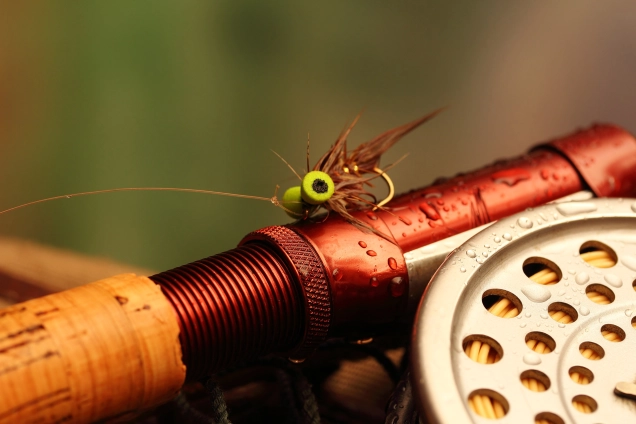
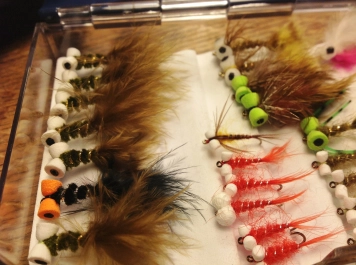
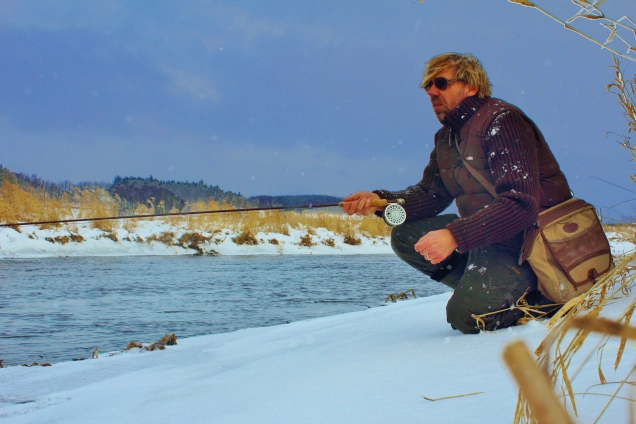
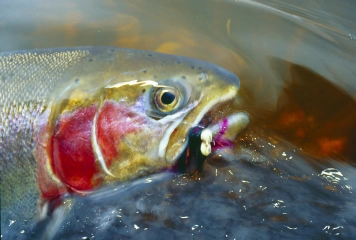
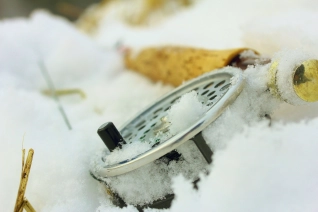
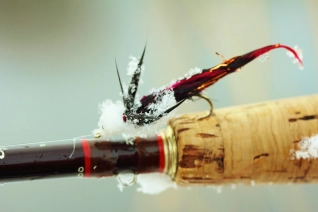
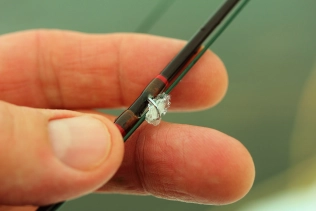
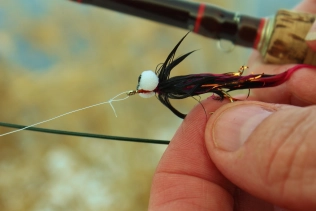
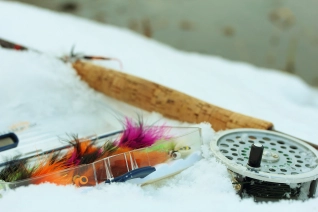
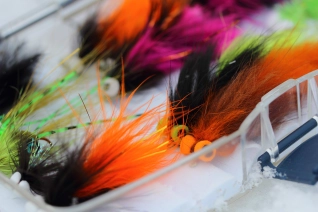

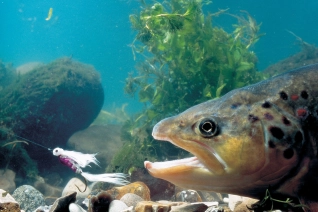
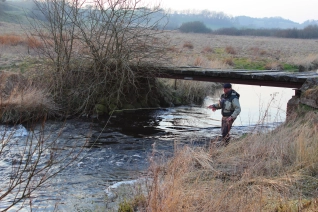
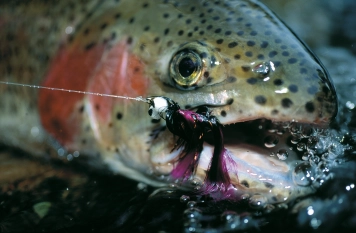
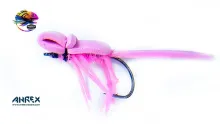
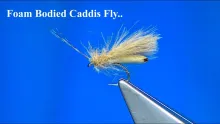
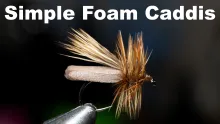
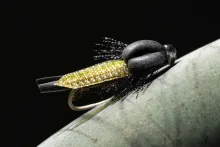
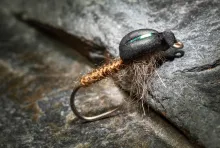
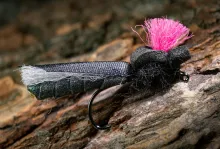

Interesting, will tr
Interesting, will try the sinking line, floating fly (perhaps a popper), in the warm flats waters of Florida.
All the best, Mike
Hi pit Sure. Booby
Hi pit
Sure. Booby flies flies work anytime of year. You just have to adapt your tackle and fishing technique to the depth in which the fish are holding. In my iBook on Booby flies (review elsewhere on GFF) you can find specialized Booby fishing techniques for all seasons.
Best regard
Michael
great idea for winte
great idea for winter fishing. Does it work in the other seasons as well ?